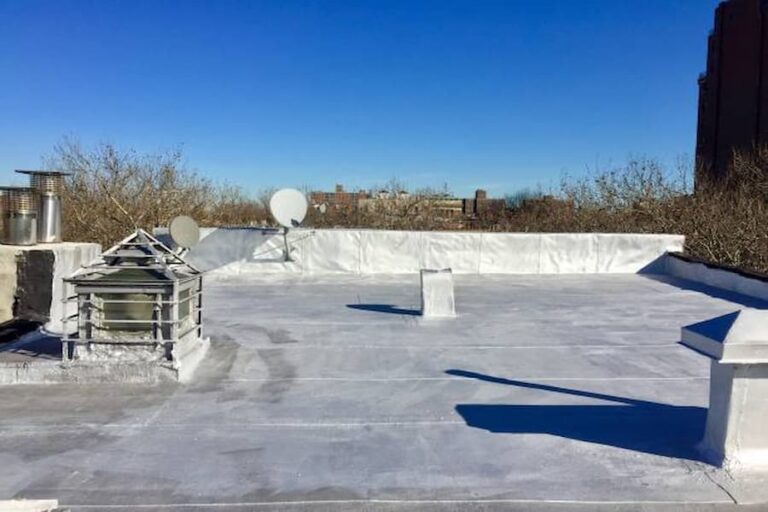How Much to Replace Underlayment on Tile Roof
How much to replace underlayment on tile roof? When it comes to home improvements, few projects can be as daunting as replacing the underlayment on your tile roof. This seemingly complex process, while crucial for the longevity of your roof, often leaves homeowners scratching their heads over the potential costs.
But don’t fret! This guide will navigate you through the intricacies of underlayment replacement costs, ensuring you’re well-equipped with the necessary knowledge to make an informed decision.
By the end of this article, you’ll be able to confidently answer the question, “How much does it cost to replace underlayment on a tile roof?” So, are you ready to delve into the world of roofing expenses? Let’s get started!
Understanding the Basics: What is Roof Underlayment?
Roof underlayment is a key component of your roofing system. It is the layer of material that is applied directly onto your roof deck before the roof covering (tiles, shingles, metal, etc.) is installed. This material serves as a secondary barrier against weather elements such as rain, snow, and wind.
The underlayment provides a smooth, flat surface for the tile installation and plays a critical role in preventing leaks and moisture damage. While not visible from the outside, it is essentially the backbone of your roof, providing an extra layer of protection between the roof deck and the tiles.
The Importance of Underlayment in a Tile Roof
When it comes to tile roofs, the underlayment is even more crucial. Tiles, while extremely durable and long-lasting, have joints where water can potentially seep through. The underlayment is what prevents this water from reaching the roof deck and causing damage. It also serves as a cushion for the tiles, providing a level surface for installation and reducing tile breakage.
Furthermore, underlayment enhances the overall performance of your tile roof, contributing to its longevity and durability. Without a good quality underlayment, your tile roof is susceptible to leaks and other forms of damage, which can lead to costly repairs in the future.
Read More: Should I Replace My Roof if It’s Not Leaking
Factors Influencing the Cost of Replacing Underlayment
The cost of replacing your roof underlayment can vary greatly depending on several factors. Firstly, the size of your roof plays a huge role. A larger roof will require more material and labor, thus increasing the overall cost. The type of underlayment you choose is another factor.
There are different types of underlayments available in the market, with synthetic ones being more expensive than traditional felt underlayments. The condition of your existing roof can also affect the cost. If there is significant damage that needs to be repaired before the new underlayment can be installed, this will add to the overall cost.
Lastly, labor costs can vary depending on your location and the roofing contractor you choose. It’s always advisable to get several quotes in order to find the best price.
Average Cost Breakdown: Labor and Materials
When it comes to replacing the underlayment on your tile roof, the cost can be broken down into two main categories: labor and materials. The majority of the expense typically comes from labor, as this is a job that requires a high degree of expertise and precision.
The cost of labor can vary depending on the complexity of the job, the location of the property, and the rates charged by the professional roofing contractor.
Materials, on the other hand, usually make up a smaller portion of the cost. The price of underlayment varies depending on the type and quality of the material used.
Synthetic underlayment, for example, is usually more expensive than felt underlayment, but it also tends to last longer and provide better protection.
Money-Saving Tips for Underlayment Replacement
While replacing the underlayment on a tile roof can be expensive, there are ways to save money on the project. One of the biggest ways to cut costs is to do your research and shop around for the best prices on materials. Buying in bulk might also save you money.
Another way to save is by scheduling the replacement during the off-peak season. Contractors are usually less busy during these times and may offer discounts to secure business.
Finally, regular maintenance and inspections can help prevent the need for a complete underlayment replacement. Catching and fixing minor issues early can save you a significant amount of money in the long run.
When to Consider a Complete Tile Roof Replacement
There are certain circumstances when it might be more cost-effective to replace the entire tile roof, rather than just the underlayment. This is generally the case when the tiles themselves are old, damaged, or deteriorating.
If the underlayment needs replacing because of water damage, it’s likely that the tiles are also affected and may need to be replaced. Also, if you’re already planning on replacing the tiles in the near future, it might be more practical to do the entire job at once.
However, a full roof replacement is a significant investment. It’s important to consult with a professional roofer to assess the condition of your roof and determine the most cost-effective course of action.
Conclusion
In conclusion, replacing the underlayment on your tile roof is a significant investment that depends on multiple factors. The cost can fluctuate based on the materials used, labor charges, and the size and complexity of the roof. However, smart homeowners can find ways to save on costs without compromising quality.
Remember, regular maintenance can prevent serious damages and costly replacements. Ultimately, understanding the basics of roof underlayment, its importance, and the factors influencing its replacement costs will empower you to make the right decision for your home.






